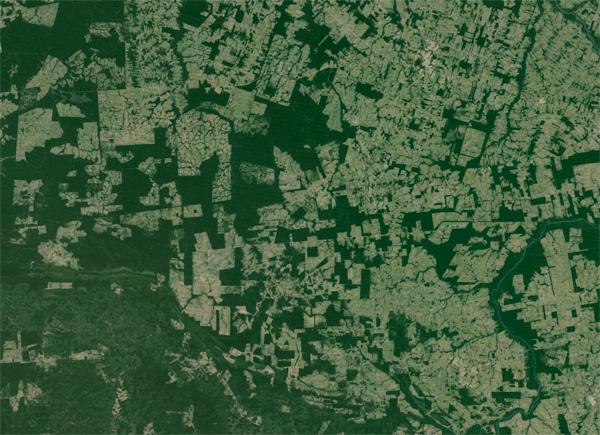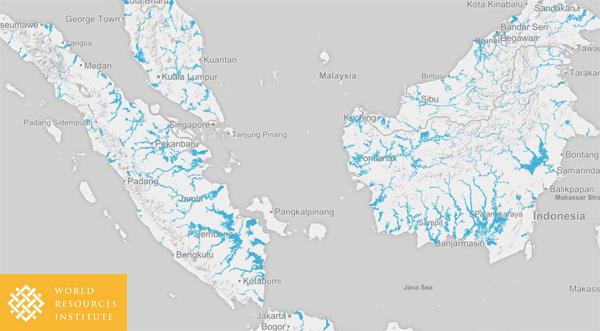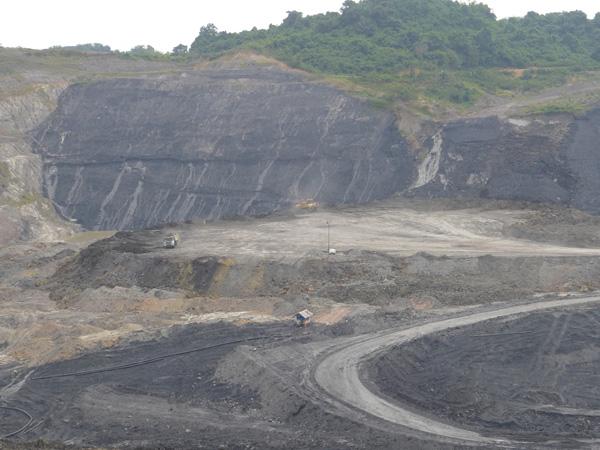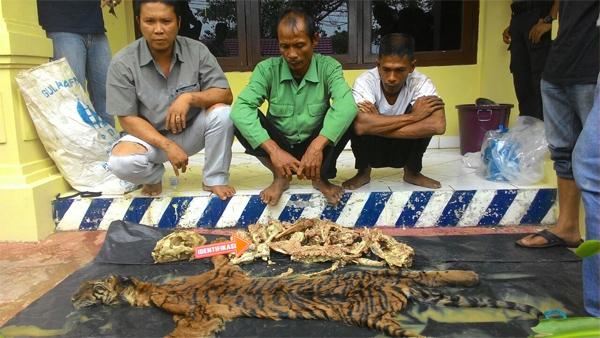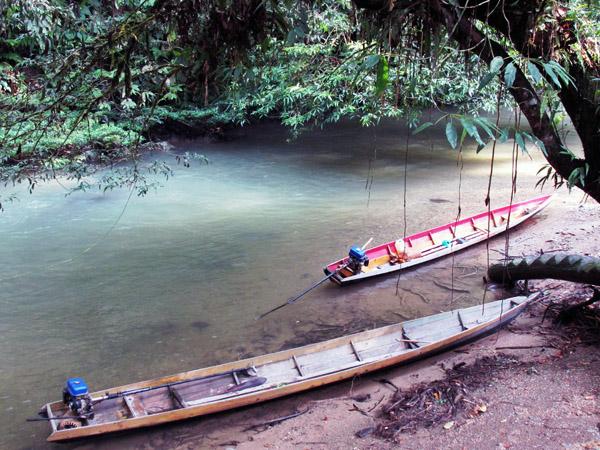Loren Bell
Author
CONTACT ME
Website: news.mongabay.com
LATEST
World’s Fragmented Forests Are Deteriorating
The world’s forests are fragmented and deteriorating, states a new paper published in Science Advances. After analyzing satellite imagery and compiling data from long-term fragmentation studies, the authors conclude that 70 percent of remaining forest land exists within 1 km of an edge, which negatively impacts their fauna, flora, and ecosystem services.
|
River Flooding to Affect 40M People Annually by 2030
20.7 million people are affected by river flooding each year, and the number is expected to more than double by 2030 as population growth, urban expansion, and climate change will increasingly put people at risk.
|
Indonesia Reaffirms Commitment for Mining and Logging
The governor of East Kalimantan, Indonesia, has reaffirmed his commitment to a 2013 moratorium on mining, logging, and plantation permits.
|
Tiger Poachers Caught in Indonesia Authority Sting Operation
A sting operation by Indonesian officials snared a group of tiger hunters operating in Karinci Seblat National Park in Jambi Province, Sumatra.
|
Indonesia Dissolves Agency Charged With Forestry Reform
The world’s first cabinet-level ministry dedicated to implementing REDD+ has been dissolved. In accordance with Indonesian Presidential Decree No. 16/2015 the agency known as BP REDD+, along with the National Council on Climate Change, has been absorbed into the newly merged Ministry of the Environment and Forestry (MoEF) as part of a massive government restructuring.
|
Sulawesi Communities Sustainably Managing Forests
“If we don’t have forests, community grounds, burial place, and rice fields... then what will be the fate of our families?” asks Layuk Sarungallo, a traditional leader of the Ke’te Kessu area of the Bonoran Village in North Toraja Regency of Sulawesi.
|
Local Community in Sumatra Protect Forest Timber
The village of Pekandangan sits on the border of Register 39, a 41,000-hectare protected forest containing the headwaters of the Way Seputih River. The Way Seputih is the longest and most important river in the area, providing irrigation to the rice fields in Lampung Tenga before flowing into the Betik swamp and the Java Sea.
|
Traditional Farms and Forests Threatened in West Guinea
A half-kilometer south of the village of Demaisi, Yohan Ullo pulls weeds from his garden. The 50 square meters of land was only recently cleared for planting.
|
Indonesia Community Regains Forest Rights
During Indonesia’s 2014 national census, 848 people were recorded living in the village of Setulang, an hour’s drive from Malinau, North Kalimantan (formerly part of East Kalimantan) at the confluence of the Malinau and Setulang rivers. All of them consider themselves members of the Umo' Longh tribe of the Kenyah Dayak people that once resided deep in the heart of Borneo.
|
Sumatran Community Taking Charge of Forest Protection
“We were managing communal land, but according [to] the government it was protected forest,” Syafrizal recalls, “I knew that what was happening elsewhere could happen to us.”
|
World’s Fragmented Forests Are Deteriorating
The world’s forests are fragmented and deteriorating, states a new paper published in Science Advances. After analyzing satellite imagery and compiling data from long-term fragmentation studies, the authors conclude that 70 percent of remaining forest land exists within 1 km of an edge, which negatively impacts their fauna, flora, and ecosystem services.
|
River Flooding to Affect 40M People Annually by 2030
20.7 million people are affected by river flooding each year, and the number is expected to more than double by 2030 as population growth, urban expansion, and climate change will increasingly put people at risk.
|
Indonesia Reaffirms Commitment for Mining and Logging
The governor of East Kalimantan, Indonesia, has reaffirmed his commitment to a 2013 moratorium on mining, logging, and plantation permits.
|
Tiger Poachers Caught in Indonesia Authority Sting Operation
A sting operation by Indonesian officials snared a group of tiger hunters operating in Karinci Seblat National Park in Jambi Province, Sumatra.
|
Indonesia Dissolves Agency Charged With Forestry Reform
The world’s first cabinet-level ministry dedicated to implementing REDD+ has been dissolved. In accordance with Indonesian Presidential Decree No. 16/2015 the agency known as BP REDD+, along with the National Council on Climate Change, has been absorbed into the newly merged Ministry of the Environment and Forestry (MoEF) as part of a massive government restructuring.
|
Sulawesi Communities Sustainably Managing Forests
“If we don’t have forests, community grounds, burial place, and rice fields... then what will be the fate of our families?” asks Layuk Sarungallo, a traditional leader of the Ke’te Kessu area of the Bonoran Village in North Toraja Regency of Sulawesi.
|
Local Community in Sumatra Protect Forest Timber
The village of Pekandangan sits on the border of Register 39, a 41,000-hectare protected forest containing the headwaters of the Way Seputih River. The Way Seputih is the longest and most important river in the area, providing irrigation to the rice fields in Lampung Tenga before flowing into the Betik swamp and the Java Sea.
|
Traditional Farms and Forests Threatened in West Guinea
A half-kilometer south of the village of Demaisi, Yohan Ullo pulls weeds from his garden. The 50 square meters of land was only recently cleared for planting.
|
Indonesia Community Regains Forest Rights
During Indonesia’s 2014 national census, 848 people were recorded living in the village of Setulang, an hour’s drive from Malinau, North Kalimantan (formerly part of East Kalimantan) at the confluence of the Malinau and Setulang rivers. All of them consider themselves members of the Umo' Longh tribe of the Kenyah Dayak people that once resided deep in the heart of Borneo.
|
Sumatran Community Taking Charge of Forest Protection
“We were managing communal land, but according [to] the government it was protected forest,” Syafrizal recalls, “I knew that what was happening elsewhere could happen to us.”
|

